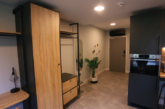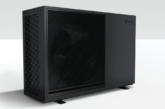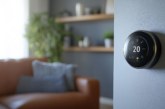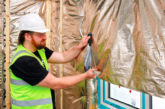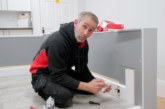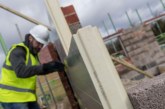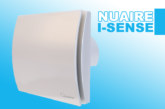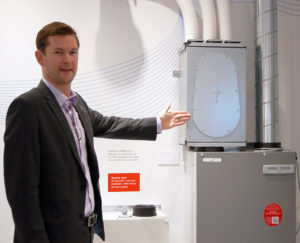
For more information visit www.zehnder.co.uk
The quality of the air in our indoor environment is a growing issue. Rupert Kazlauciunas, Technical Product Manager, MVHR, Zehnder Group UK, takes a look at the challenges of making our homes healthy.
A recent ruling by the UK’s High Court deemed the country’s current stance on tackling Indoor Air Quality (IAQ) to be ‘insufficient’. Not only has IAQ as an issue been largely underestimated, there is evidence showing that indoor air pollution can actually be up to five times deadlier than its outdoor counterparts. Car pollutants are widely accepted as a risk from which it is worth protecting ourselves, but very few of us, until recently, have been aware of the dangers of the pollutants inside our homes.
So what’s the issue?
Inadequate indoor ventilation coupled with emissions from certain building materials exposes people to a wide range of Volatile Organic Compounds (VOCs) which can have a devastating effect on health. Let’s take a look at what these are and how damaging they can be.
The health effects of poor IAQ
Societal and habitual changes, partly resulting from the convenience of modern technology and the move towards a more ‘online’ lifestyle, mean people spend up to 90% of their time indoors. Poor ventilation has a direct link to increased humidity levels, leading to a build-up of mould and condensation which can aggravate physical conditions such as asthma.
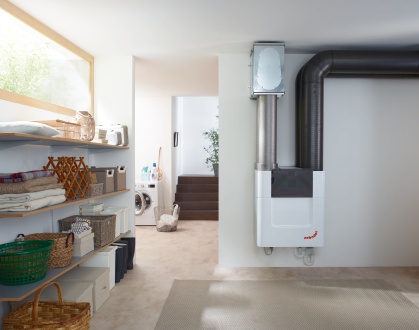 The negative impact of everyday household products on health has also been ‘underestimated’, according to recent US research, showing that chemicals in deodorants, hairsprays, cleaning agents and nail polish remover rival some vehicle emissions as key contributors to air pollution.
The negative impact of everyday household products on health has also been ‘underestimated’, according to recent US research, showing that chemicals in deodorants, hairsprays, cleaning agents and nail polish remover rival some vehicle emissions as key contributors to air pollution.
Aside from the resulting ‘inconvenient’ health effects, such as confusion, headaches and poor sleep patterns, indoor pollutants also contribute to a host of serious long-term health risks, such as Respiratory disorders including asthma, Depression, Anxiety, Dementia and Cardiovascular disease.
Effective ventilation
One way of tackling the problem of poor IAQ is to ensure that ventilation is effective and meeting minimum standards as stated by Building Regulations, eliminating the risks of mould and condensation. Our own whole house ventilation approach, which uses flow control to keep motors at a constant volume to maintain commissioned ventilation rates, recently featured on Channel 4’s Grand Designs. It was used in a home designed to be a safe and healthy environment for the owners’ children, who suffer from severe allergies. The project was devised and engineered to ensure a comfortable and healthy indoor climate throughout the year; keeping the occupants comfortable in the winter, cool in the summer and as free from air pollution as possible.
The project, which was managed by Enhabit, featured our Mechanical Ventilation with Heat Recovery (MVHR) unit, an air source heat pump and triple-glazed aluminium-clad windows and doors. The MVHR system, which was referred to in the programme as the ‘lungs of the house’, extracts indoor air from rooms to keep excess humidity, carbon dioxide and toxins at healthy levels. The unit was installed alongside semi-rigid ducting which is easy to maintain and keep clean. The warm, extracted air is then run through a heat exchanger and the heat is passed to incoming cold air from outside, with efficiency levels of up to 96 per cent.
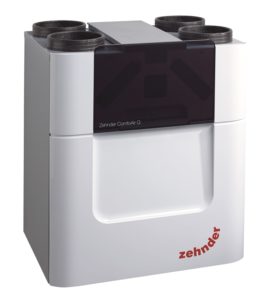 IAQ and energy efficiency
IAQ and energy efficiency
Despite these clearly successful innovations in IAQ improvement, there is a still a struggle to get them recognised widely by building regulations. Energy efficiency remains a priority when it comes to current regulations, meaning that some solutions designed to improve IAQ can often be ignored or penalised due to their (still modest) consumption of energy.
There have been recent changes to standards around filtration requirements, but this change is still relatively new and unregulated, so will take some time to be widely implemented. In fact, some developers choose to install MVHR units which are fitted with low-grade filters over more effective filtration, to improve specific fan power (SFP) and avoid being penalised for poor energy performance. This highlights the disconnect between the steps taken to improve IAQ and the commercial focus on energy efficiency.
As we head to more decarbonisation of the grid, the focus needs to shift from energy savings to health. One solution would be to make digital sensors a mandatory requirement for MVHR units, to react to issues with poor ventilation, humidity, temperature and CO2 emissions.
In order to give sufficient credit to the innovations that have been designed to improve IAQ, we would advocate the implementation of a pass/fail system that looks beyond energy usage and takes into consideration the steps being taken to counteract health risks.
What’s next?
October 2018 saw the release of the All Party Parliamentary Group (APPG)’s white paper, ‘Building Our Future: Laying the Foundations for Healthy Homes and Buildings’. The report, to which we contributed, alongside many other organisations and individuals involved in the building services industry, makes an excellent start in discussing and highlighting the very serious issue of IAQ and other factors impacting how (un)healthy our homes are. However, there is still a long way to go.
The whole built environment, as well as the government, has a vital role to play in continuing to raise IAQ as a major concern and a vital consideration in how we design, build and maintain the buildings we occupy, in order to safeguard our health and our future.


